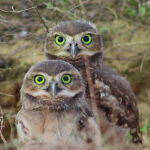Inspired by reporting from The Guardian
When we think of the Arctic, our minds usually conjure icy expanses, polar bears, and seals not chirping birds flitting about ancient conifer forests. But recent fossil discoveries in Alaska are challenging our perceptions of both birds and the prehistoric world they inhabited.
In a remarkable revelation published in Science and shared by The Guardian, scientists have uncovered fossil evidence that birds were nesting in the Arctic a staggering 73 million years ago during the age of the dinosaurs. This discovery from the Prince Creek Formation in northern Alaska pushes the known date for polar bird nesting back by more than 25 million years, beating the previous record held by an Eocene penguin colony in Antarctica.
More than 50 minuscule bird fossils some less than 2mm in size were excavated through painstaking work akin to panning for gold. Many of the bones belonged to hatchlings or even embryos, providing strong evidence that birds were breeding in this polar region.
The fossils included species from now-extinct groups like Ichthyornithes, birds that resembled toothed seagulls, and Hesperornithes, aquatic diving birds. Significantly, several fossils came from toothless birds that may have resembled modern ducks an important link to Neornithes, the group that includes all living birds.
The Prince Creek ecosystem of the Late Cretaceous would have experienced about six months of daylight in summer and four months of darkness in winter. While winters were milder than today’s Arctic freeze, they were still cold and snowy. Whether these birds stayed through the winter or migrated remains uncertain, though researchers suggest some were likely migratory.
“This fills a major gap in our understanding of bird evolution,” said Prof. Patrick Druckenmiller of the University of Alaska, one of the study’s co-authors. Modern birds play critical roles in Arctic ecosystems, and this find shows such dynamics are not just recent they are part of a deep evolutionary story.
Steve Brusatte of the University of Edinburgh, who was not involved in the study, called the fossils “absolutely minuscule,” but noted they told “a huge story.” Indeed, these tiny bones are a powerful reminder that birds have been resilient, adaptive survivors nesting and thriving in the polar extremes even during the reign of the dinosaurs.
Reference:
Original reporting by The Guardian: Birds were nesting in the Arctic during age of dinosaurs, scientists discover
theguardian.com




0 Comments